362. When Delta (δ Andromedae at her left shoulderblade, tu'a ivi) was at the Full Moon in March 29 (88 = 22 * 4)
it implied the Sun should have been in JULY 25 (→ St James) at the time of the Bull.
... He bore a grievous weight of dry wood, which he cast down with a din inside the cave, so that in fear all fled to hide. Lifting a huge doorstone, such as two and twenty good four-wheeled [22 * 4 = 88] wains could not have raised from the ground, he set this against the mouth of the cave, sat down, milked his ewes and goats, and beneath each placed her young, after which he kindled a fire and spied his guests ...
... The date to celebrate St James (the Great) was July 25 in Western Christianity, April 30 in Eastern Christianity, and December 30 in the Hispanic Church ...
206 (JULY 25) + 64 (distance up to the time of rongorongo) = 270 (September 27) = March 29 (88) + 182 = December 27 (361 = 19 * 19) + 186 (= 182 + 4) - 365 + 88. The Julian equinox came 4 + 84 = 88 days after day 19 * 19, i.e. 361 + 4 + 84 = 449 = 365 + 84.
And *88 (Bet-el-Geuze, the 'House' - i.e. birthplace - of the Giant) + *64 = *152 (Regulus, Little King).
|
*88 |
*63 |
*152 |
|
Betelgeuze |
Regulus |
|
JAN 24 (88 - 64) |
63 |
MARCH 29 (152 - 64) |
117 |
JULY 25 (270 - 8 * 8) |
|
88 |
152 |
270 (= 152 + 4 * 29½) |
|
March 29 (24 + 64) |
June 1 (88 + 64) |
Sept 27 (152 + 118) |
| CLOSE TO THE SUN: |
| 5-29 → 145 |
5-30 |
5-31 (*71) |
6-1 (152) |
6-2 |
| JUNE 13 (*84) |
14 |
15 |
16 → 6.16 |
17 (168 = 88 + 320 / 4) |
 |
 |
 |
 |
 |
| Ga4-1 (84) |
Ga4-2 |
Ga4-3 |
Ga4-4 |
Ga4-5 (88) |
| υ¹ Hydrae (148.4), RAS ELASET BOREALIS (Heaven's Record) = μ Leonis (148.7) *148.4 - *41.4 = *107 |
TSEEN KE (Heaven's Record) = φ Velorum (149.9) |
ν Leonis (150.1), π Leonis (150.6) |
υ² Hydrae (151.8) |
Al Jabhah-8 (The Forehead) / Maghā-10 (Bountiful) / Sharru-14 (King)
10h (152.2)
AL JABHAH = η Leonis (152.4), REGULUS (Little King) = α Leonis (152.7)*152.4 - *41.4 = *111 |
| Aug 16 |
17 (229) |
18 |
19 |
20 (*152) |
| °Aug 12 |
13 (225) |
14 |
15 |
16 (*148) |
| 'July 20 (201) |
21 |
22 / 7 |
23 |
24 (*125) |
| "July 6 (*107) |
7 (188) |
8 (172 + 17) |
9 |
He Anakena 10 |
|
... [E:22] They stayed (there longer). On the fifth day of the month of July (Anakena), they all got up, went downhill, went on, and reached Hanga Te Pau. They took their provisions with them, carrying them on their shoulders, went on, and reached Te Pou. They made camp and slept in Te Pou on the tenth of the month of July (Anakena) ... he amoamo he oho he tuu ki te pou he noho he moe i te pou.i te angahuru o te raa.ko te anakena. |
| CLOSE TO THE FULL MOON: |
| 11-27 |
11-28 |
11-29 (333) |
11-30 (*254) |
12-1 |
| DEC 12 |
13 |
14 (*268) |
15 |
16 (350) |
| θ Piscis Austrini (330.1), λ Oct. (330.7) |
KUH (Weeping) = μ Capricorni (331.4), γ Gruis (331.5) |
no star listed (332) |
η Piscis Austrini (333.4)
*333.4 - *41.4 = *292 |
22h (334.8)
KAE UH (Roof) = ο Aquarii (334.0), AL KURHAH (White Spot) = ξ Cephei (334.4), SADALMELIK (Lucky King), AL DHANAB (The Tail) = λ Gruis (334.6), ι Aquarii, ν Pegasi (334.7)*334.4 - *41.4 = *293 |
| Febr 14 |
15 |
16 |
17 (14 * 29½) |
18 (414) |
| °Febr 10 |
11 |
12 (408 = 398 + 10) |
13 |
2-14 |
| 'Jan 18 |
19 (384) |
20 |
21 |
22 |
| "Jan 4 |
5 |
6 |
Tua Haro 7 (372) |
8 (*293 = *283 + *10) |
| Tua. 1. Back, shoulder, tu'a ivi, shoulder blade; tu'a ivi more, lumbago; moa tu'a ivi raá, 'sun-back chicken': chicken with a yellow back which shines in the sun. 2. Behind (a locative adverb, used with i, ki, a, o, etc). Tu'a-papa, pelvis, hips. Vanaga. 1. Behind, back, rear; ki tua, after; o tua, younger; taki tua, perineum. 2. Sea urchin, echinus. The word must have a germ sense indicating something spinous which will be satisfactorily descriptive of the sea urchin all spines, the prawn with antennae and thin long legs, and in the Maori the shell of Mesodesma spissa. Tuaapapa, haunch, hip, spine. Tuahaigoigo, tattooing on the back. Tuahuri, abortion; poki tuahuri, abortive child. Tuaivi, spine, vertebræ, back, loins; mate mai te tuaivi, ill at ease. Tuakana, elder, elder brother; tuakana tamaahina, elder sister. Tuamouga, mountain summit. Tuatua, to glean. Mgv. tua: To fell, to cut down. Ta.: tua, to cut. Mq.: tua, to fell, to cut down. Ma.: tua, id. Tuaki, to disembowel. Ma.: tuaki, to clean fish. Tuavera, the last breadfruit spoiled by the wind. Ta.: tuavera, burnt by the sun. Churchill. |
| Haro. To pull; popohaga o te rua raá, i haro i te aka o te miro, on the morning of the second day, they pulled up the anchor of the boat. He haro i te hagu a roto, to draw in air, to breathe. He-haro te vaka i te au , the boat is towed off course in the current. Vanaga. a. to point, to raise the arm, to stretch out the hand or other member, to spread, to point the yards. b. to hoist, to pull up, to entice. c. to stiffen, to grasp, to squeeze. Haroharo, to point, to limp. PS Sa.: falo, to stretch out. To.: falo, to stretch out, to make tense. Fu.: falo, to stretch out, to lay hands on. Churchill. |
|
| CLOSE TO THE SUN: |
| 6-3 (164) |
6-4 → 24 |
6-5 |
6-6 → 360 |
6-7 (210 - 42) |
6-8 → 48 |
6-9 (2 * 80) |
| JUNE 18 |
19 (170) |
20 |
SOLSTICE |
22 |
23 |
ST JOHN'S DAY |
 |
 |
 |
 |
 |
 |
 |
| Ga4-6 |
Ga4-7 |
Ga4-8 |
Ga4-9 (92) |
Ga4-10 |
Ga4-11 |
Ga4-12 |
| λ Hydrae (153.2) |
ADHAFERA = ζ Leonis, TANIA BOREALIS (Northern Gazelle) = λ Ursae Majoris, SIMIRAM = ω Carinae (154.7) |
ALGIEBA (The Mane) = γ Leonis, q Carinae (155.5) |
TANIA AUSTRALIS (Southern Gazelle) = μ Ursae Majoris (156.0), GHOST OF JUPITER = NGC3242 Hydrae (156.8) |
Extended Net-26b (Ox) μ Hydrae (157.1) |
Maru-sha-arkat-Sharru-15 (4th Son behind the King) SHIR (Possessing Luminous Rays) = ρ Leonis (158.9) |
p Carinae (159.3) |
|
... From a point a little to the west of ζ [Adhafera, ζ Leonis] and not much farther from γ - when first observed the radiant point was in Cancer - issue the Leonids, the meteor stream of November 9th to 17th, its maximum now occurring on the 13th to 14th, which about every thirty-three years has furnished such wonderful displays, the last in 1866 and the next due in 1899.
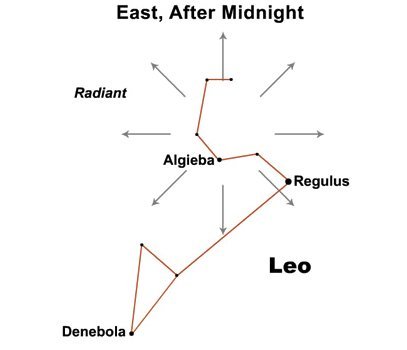
Their first noticed appearance may have been in the year 137, since which date the stream has completed fifty-two revolutions. According to Theophanes of Byzantium, the shower was seen from there in November, 472; but the late Professor Newton, our deservedly great authority on the whole subject of meteors, commenced his list of the Leonids with their appearance on the 13th of October, 902, the Arabian Year of the Stars, during the night of the death of King Ibrahim ben Ahmad, and added:
It will be seen that all these showers are at intervals of a third of a century, that they are at a fixed day of the year, and that the day has moved steadily and uniformly along the calendar, at the rate of about a month in a thousand years. (Allen) |
| Aug 21 |
22 (*154) |
23 |
24 (8 * 29½) |
25 |
26 |
27 |
| °Aug 17 |
18 (*150) |
19 (2 * 115) |
20 |
21 |
22 |
23 |
| 'July 25 |
26 (*127) |
27 |
28 |
29 |
30 (7 * 30) |
31 |
| "July 11 |
12 |
13 |
14 (*115) |
15 |
16 |
17 (*118) |
| HANGA TAKAURE |
| CLOSE TO THE FULL MOON: |
| 12-2 (88 + 248) |
12-3 |
12-4 |
12-5 |
12-6 (340) |
12-7 (*161 + *100) |
12-8 |
| DEC 17 |
18 |
19 (*273 = 3 * 91) |
20 (354) |
SOLSTICE |
22 |
23 |
| ι Pegasi (335.0), ALNAIR (The Bright One) = α Gruis (335.1), μ Piscis Austrini, υ Piscis Austrini (335.3), WOO (Pestle) = π Pegasi (335.7), BAHAM = θ Pegasi, τ Piscis Austrini (335.8) |
ζ Cephei (336.2), λ Cephei (336.3), -/270 Lac. (336.7), λ Piscis Austrini (336.8) |
μ Gruis (337.0), ε Cephei (337.2), 1/325 Lac. (337.3), ANCHA (Hip) = θ Aquarii (337.4), ψ Oct. (337.5), α Tucanae (337.9) *337.4 - *41.4 = *296 |
Al Sa'ad al Ahbiyah-23 (Lucky Star of Hidden Things) / Shatabisha-25 (Comprising a Hundred Physicians)
ε Oct. (338.1), ρ Aquarii (338.2), 2/365 Lac. (338.5), SADACHBIA = γ Aquarii (338.6), π Gruis (338.9) |
β/172 Lac. (339.2), 4/1100 Lac. (339.4), π Aquarii (339.5)
CASTOR (α Gemini)
|
δ Tucanae (340.1), ρ Cephei (340.2), ν Gruis (340.3), ζ Aquarii, δ Gruis (340.4), 5/1100 Lac. (340.7), σ Aquarii, 6/650 Lac. (340.9) PROCYON (α Canis Minoris)
|
υ Oct. (341.0), α/91 Lac. (341.1), HOMAN = ζ Pegasi, β Piscis Austrini (341.2), ν Tucanae (341.5), υ Aquarii (341.9) |
|
... It must be admitted, however, that the task of raising the sky was not always a long and arduous one. In the New Hebrides of Melanesia the sky was formerly so low overhead that a woman who was pounding roots in a mortar happened to strike the sky with her pestle. Greatly annoyed at the interruption she looked up and cried angrily, 'Go on up higher!' Whereat the sky meekly obeyed her. What actually happened probably was that the woman struck the low house roof with her pestle and cried angrily to her husband, 'If you don't raise that roof higher, I won't cook you another meal!' thus giving a strong impuls to the development of the science of architecture ... In the Mayan ball games the players were not allowed to use any other body part than their hips. .jpg)
... The state of the tree loomed large in their thoughts, because it came about at the same time the head of One Hunaphu was put in the fork. The Xibalbans said among themselves: 'No one is to pick the fruit, nor is anyone to go beneath the tree', they said. They restricted themselves, all of Xibalba held back. It isn't clear which is the head of One Hunaphu; now it's exactly the same as the fruit of the tree. Calabash came to be its name, and much was said about it. A maiden heard about it, and here we shall tell of her arrival. And here is the account of a maiden, the daughter of a lord named Blood Gatherer. And this is when a maiden heard of it, the daughter of a lord. Blood Gatherer is the name of her father, and Blood Moon is the name of the maiden.
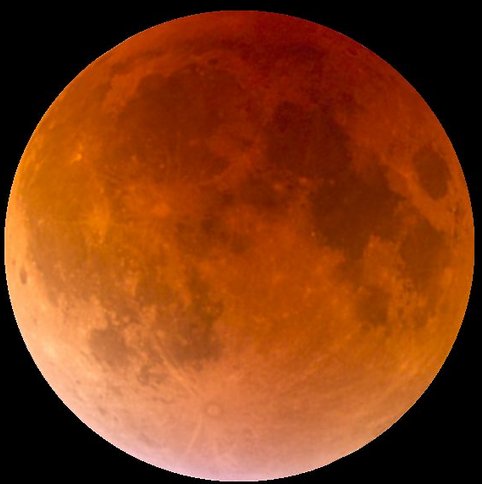
And when he heard the account of the fruit of the tree, her father retold it. And she was amazed at the account: I'm not acquainted with that tree they talk about. It's fruit is truly sweet! they say, I hear, she said. Next, she went all alone and arrived where the tree stood. It stood at the Place of Ball Game Sacrifice. What? Well! What's the fruit of this tree? Shouldn't this tree bear something sweet? They shouldn't die, they shouldn't be wasted. Should I pick one? said the maiden. And then the bone spoke; it was there in the fork of the tree: Why do you want a mere bone, a round thing in the branches of a tree? said the head of One Hunaphu when it spoke to the maiden. You don't want it, she was told. I do want it, said the maiden. Very well. Stretch out your right hand here, so I can see it, said the bone. Yes, said the maiden. She stretched out her right hand, up there in front of the bone. And then the bone spit out its saliva, which landed squarely in the hand of the maiden ... |
| Febr 19 (50) |
20 |
21 |
22 |
Terminalia |
24 (420 = 30 * 14) |
25 |
| °Febr 15 |
16 |
17 (14 * 29½) |
18 (414) |
19 |
20 |
21 (52) |
| 'Jan 23 |
24 |
25 |
26 |
(392 = 378 + 14) |
28 |
29 (*314 → π) |
| "Jan 9 |
10 |
11 |
12 |
13 (378 → Saturn) |
Tua Haro 14 |
15 (*300) |
| 26 |
CLOSE TO THE SUN: |
| 7-6 (187 = 202 - 15) |
7-7 (*108) |
7-8 |
7-9 |
7-10 |
| JULY 21 (175 + 27) |
7-22 (*123) |
23 (204) |
24 |
ST JAMES THE GREAT |
 |
 |
 |
 |
 |
| Ga5-12 |
Ga5-13 (123) |
Ga5-14 |
Ga5-15 |
Ga5-16 |
| CHANG SHA (Long Sand-bank) = ζ Corvi (186.3) |
INTROMETIDA (Inserted) = ε Crucis (187.4), ACRUX = α Crucis (187.5) *146 = *187.4 - *41.4 |
γ Com. Berenicis (188.0), σ Centauri (188.1), ALGORAB = δ Corvi (188.5), GACRUX = γ Crucis (188.7) |
γ Muscae (189.0), AVIS SATYRA (Bird of the Satyrs) = η Corvi (189.3), ASTERION (Starry) = β Canum Ven. (189.5), KRAZ = β Corvi, κ Draconis (189.7) |
α Muscae (190.2), τ Centauri (190.5), χ Virginis (190.7)
ALDERAMIN (α Cephei)
|
 ... Raven gazed up and down the beach. It was pretty, but lifeless. There was no one about to upset, or play tricks upon. Raven sighed. He crossed his wings behind him and strutted up and down the sand, his shiny head cocked, his sharp eyes and ears alert for any unusual sight or sound. The mountains and the sea, the sky now ablaze with the sun by day and the moon and stars he had placed there, it was all pretty, but lifeless. Finally Raven cried out to the empty sky with a loud exasperated cry. And before the echoes of his cry faded from the shore, he heard a muffled squeak. He looked up and down the beach for its source and saw nothing. He strutted back and and forth, once, twice, three times and still saw nothing. Then he spied a flash of white in the sand. There, half buried in the sand was a giant clamshell. As his shadow fell upon it, he heard another muffled squeak. Peering down into the opening between the halves of the shell, he saw it was full of tiny creatures, cowering in fear at his shadow ... |
| Sept 23 (*122 + *64) |
24 (*187) |
25 (268) |
26 |
27 |
| °Sept 19 (*122 + *60) |
20 (*183) |
21 (264) |
EQUINOX |
23 |
| 'Aug 27 (*122 + *37) |
28 (240) |
29 (*161) |
30 |
31 |
| "Aug 13 (*122 + *23) |
14 (*146) |
15 (227) |
16 |
17 |
| OROMANGA |
|
... The Explorers arrived at Rangi Meamea in "July 23 (Anakena 23) and there they stayed on the beautiful beach (long sand-bank) of Oromanga for 27 days ...
Maga. Branch (of tree). Magahaiga, part of the arm near the armpit, armpit. Magamaga: 1. Finger (rima matu'a neanea, thumb; tuhi henua, index finger; roaroa tahaga, middle finger; tuhia háûa, ring finger; komaniri-komanara, little finger). 2. Seaweed (shaped like small fingers). Vanaga. 1. (mama 2) A mouthful; maga nuinui, to gobble. 2. Garbage. 3. Index finger. 4. A branch; magamiro, a branch, a limb; magamaga, fork, finger, claw, rod; magamaga miro, a branch, a limb; magamaga rima, finger; magamaga vae, toe; magamaga tumu, great toe; hakamaga, a roof; magaga, fork; magatuhi, index finger; hakamagaturu, slope of a roof. Churchill. |
| CLOSE TO THE FULL MOON: |
| 1-4 (342 + 27 = 369) |
1-5 |
1-6 |
1-7 |
1-8 (73 + 300) |
| JAN 19 (384 = 369 + 15) |
20 |
21 (*306) |
22 |
23 (88 + 300) |
| no star listed (4) |
ANKAA = α Phoenicis, κ Phoenicis (5.0)
ALPHARD (α Hydrae)
|
λ Phoenicis (6.3), β Tucanae (6.4) |
ANDROMEDA GALAXY (M31), π Andromedae (7.7) |
ε Andromedae (8.2), DELTA = δ Andromedae (8.4), SCHEDIR (Breast) = α Cassiopeiae (8.6), ζ Andromedae, μ Phoenicis (8.9) |
|
... In the morning of the world, there was nothing but water. The Loon was calling, and the old man who at that time bore the Raven's name, Nangkilstlas, asked her why. 'The gods are homeless', the Loon replied. 'I'll see to it', said the old man, without moving from the fire in his house on the floor of the sea. Then as the old man continued to lie by his fire, the Raven flew over the sea. The clouds broke. He flew upward, drove his beak into the sky and scrambled over the rim to the upper world. There he discovered a town, and in one of the houses a woman had just given birth.
The Raven stole the skin and form of the newborn child. Then he began to cry for solid food, but he was offered only mother's milk. That night, he passed through the town stealing an eye from each inhabitant. Back in his foster parents' house, he roasted the eyes in the coals and ate them, laughing. Then he returned to his cradle, full and warm. He had not seen the old woman watching him from the corner - the one who never slept and who never moved because she was stone from the waist down. Next morning, amid the wailing that engulfed the town, she told what she had seen. The one-eyed people of the sky dressed in their dancing clothes, paddled the child out to mid-heaven in their canoe and pitched him over the side ... .jpg)
|
| March 25 (384 - 300) |
26 |
27 |
28 (*372) |
29 (*8) |
| 0h |
°March 22 |
23 |
24 (*368) |
25 (*4) |
| 'Febr 26 |
27 |
28 (59) |
'March 1 |
2 (*346) |
| "Febr 12 |
13 (*329) |
14 (45) |
Tehetu'upú 15 |
16 |
| Hetu. Hetu 1. To (make) sound; figuratively:
famous, renowned. 2. To crumble into embers (of a bonfire). Hetu'u. Star, planet; hetu'u popohaga
morning star; hetu'u ahiahi evening star; hetu'u viri meteorite. Vanaga. Hetu 1. Star (heetuu); hetu rere, meteor; hetu pupura, planet. P Pau.: hetu, star. Mgv.: etu, id. Mq.: fetu, hetu, id. Ta.: fetu, fetia, id. The alternative form fetia in Tahiti, now the only one in common use, need not be regarded as an anomaly in mutation. It seems to derive from Paumotu fetika, a planet. Its introduction into Tahiti is due to the fashion of accepting Paumotu vocables which arose when the house of Pomare came into power. 2. Capital letter (? he tu). 3. To amuse. 4. To stamp the feet. Hetuhetu, to calk, to strike the water. Hetuke, sea urchin. Churchill. |
| Pu. 1. To come forward to greet someone met on the road; to walk in front, to go in front: ka-pú a mu'a, let them go first. 2. Pú a mu'a, to intervene, to come to someone's rescue; he-pú-mai a mu'a, he-moaha, he came to my rescue and saved my life. 3. Ancient expression: ai ka-pú, ai ka-pú, tell us frankly what you think. 4. Hole, opening, orifice; well; circumference, rotundity; swirling water; pú-haga, vaginal orifice; pú-henua (also just henua), placenta. He pú henua nó te me'e aau, he-oti-á; ina-á me'e ma'u o te rima i-topa-ai koe, a placenta was all you had, it is a past thing now; you held nothing in your hands when you were born (stern words said to children to make them realize that they must not be demanding, since they were born naked and without possessions). 5. To dig out (tubers): he-pú i te uhi, to dig out yams. Vanaga. 1. A trumpet. P Mgv.: pu, a marine shell. Mq.: pu, conch shell. Ta.: pu, shell, trumpet. 2. A small opening, hole, mortise, stirrup, to pierce, to perforate, to prick; pu moo naa, hiding place; taheta pu, fountain, spring; hakapu, to dowel, to pierce, to perforate. PS Sa., Fu., Niuē: pu, a hole. Churchill. Mq.: Pu, source, origin. Ma.: pu, root, origin, foundation. Churchill. |
|
In March 29 (88) there ought to be a new beginning because the summer year ended half a year later at Porrima:
|
Delta (→ 4) |
δ Andromedae |
8.4 |
March 29 (88) |
0 |
|
|
Eta (→ 7) |
η Phoenicis |
9.4 |
March 30 |
1 |
|
|
η Andromedae |
11.4 |
April 1 (91) |
3 |
|
|
Gamma (→ 3) |
Cih (Whip) (γ Cassiopeiai) |
12.4 |
April 2 (92) |
4 |
|
|
1 |
Al Sharatain |
Pair of Signs |
β Arietis (Sheratan), γ (Mesarthim) |
27.4 |
April 17 (107) |
19 |
|
|
Musca Borealis |
35 (Head of the Fly), 39 (Kaffaljidhma), and 41 Arietis (Bharani) |
41.4 |
May 1 (121) |
33 |
0 |
|
2 |
Al Dabarān |
Follower |
α Tauri (Aldebaran), θ¹, θ²´, γ (Hyadum I), δ (Hyadum II), ε (Ain) |
63.4 |
May 23 (143) |
55 |
22 |
|
3 |
Al Hak'ah |
White Spot |
λ Orionis (Heka), φ¹, φ² |
83.4 |
June 12 (163) |
75 |
42 |
|
4 |
Al Han'ah |
Brand |
γ Gemini (Alhena), μ (Tejat Posterior), ν, η (Tejat Prior), ξ (Alzirr) |
93.4 |
June 22 (173) |
85 |
52 |
|
5 |
Al Dhirā' |
Forearm |
α Gemini (Castor), β (Pollux) |
113.4 |
July 12 (193) |
105 |
72 |
|
6 |
Al Nathrah |
Gap |
ε Cancri (Beehive) |
130.4 |
July 29 (210) |
123 |
90 |
|
7 |
Al Tarf |
End |
ξ Cancri, λ Leonis (Alterf) |
143.4 |
Aug 11 (223) |
135 |
102 |
|
8 |
Al Jabhah |
Forehead |
η Leonis (Al Jabhah), α (Regulus), ζ (Adhafera), γ (Algieba) |
152.4 |
Aug 20 (232) |
144 |
111 |
|
9 |
Al Zubrah |
Mane |
δ Leonis (Zosma), θ (Coxa) |
169.4 |
Sept 6 (249) |
161 |
128 |
|
10 |
Al Sarfah |
Turn |
β Leonis (Denebola) |
178.3 |
Sept 15 (258) |
170 |
137 |
|
11 |
Al Áwwā' |
Barker |
β (Alaraph), η (Zaniah), γ (Porrima), δ (Minelauva), ε Virginis (Vindemiatrix) |
191.5 |
Sept 28 (271) |
183 |
150 |
... In north Asia the common mode of reckoning is in half-year, which are not to be regarded as such but form each one separately the highest unit of time: our informants term them 'winter year' and 'summer year'. Among the Tunguses the former comprises 6½ months, the latter 5, but the year is said to have 13 months; in Kamchatka each contains six months, the winter year beginning in November, the summer year in May; the Gilyaks on the other hand give five months to summer and seven to winter. The Yeneseisk Ostiaks reckon and name only the seven winter months, and not the summer months. This mode of reckoning seems to be a peculiarity of the far north: the Icelanders reckoned in misseri, half-years, not in whole years, and the rune-staves divide the year into a summer and a winter half, beginning on April 14 [4-14] and October 14 respectively. But in Germany too, when it was desired to denote the whole year, the combined phrase 'winter and summer' was employed, or else equivalent concrete expressions such as 'in bareness and in leaf', 'in straw and in grass' ...
| CLOSE TO THE SUN: |
| 7-11 |
7-12 |
7-13 |
7-14 (*115) |
7-15 (196) |
| JULY 26 (*127) |
27 |
28 |
29 (210) |
30 |
 |
 |
 |
 |
 |
| Ga5-17 |
Ga5-18 (128) |
Ga5-19 |
Ga5-20 |
Ga5-21 |
|
Al Áwwā'-11 (The Barker) / Shur-mahrū-shirū-18 (Front or West Shur)
Sombrero Galaxy = M104 Virginis (191.1), ρ Virginis (191.4), PORRIMA = γ Virginis, γ Centauri (191.5)*191.4 - *41.4 = *150 |
ι Crucis (192.2), β Muscae (192.5), MIMOSA = β Crucis (192.9) |
no star listed (193) |
κ Crucis (194.4), ψ Virginis (194.5), μ Crucis, λ Crucis (194.6), ALIOTH (Fat Tail) = ε Ursae Majoris, ι Oct. (194.8) |
MINELAUVA = δ Virginis (195.1), COR CAROLI = α Canum Ven. (195.3) |
| Sept 28 |
29 (*192) |
30 (273) |
Oct 1 |
2 |
| °Sept 24 |
25 (*188) |
26 |
27 (270) |
28 |
| 'Sept 1 |
2 (*165) |
3 |
4 |
5 (248) |
| "Aug 18 (*150) |
19 (231) |
Hora Iti 20 (*152) |
21 |
22 |
| OROMANGA (*125 - *151) |
PAPA O PEA (*152 - *156) |
|
... He (i.e., Ira) said, 'Let's go! We shall go to Papa O Pea'. They all got up and moved on. On the twentieth day of the month of August ('Hora Iti') they went to Papa O Pea. They all went and came to Papa O Pea, looked around in Papa O Pea, and gave the name 'Papa O Pea A Hau Maka'. They stayed five days in Papa O Pea ...
Pea. (Also peapea): To go away with bits of food or mud sticking to one's face or garments. Vanaga. Peaha, perhaps ... maybe, chance, doubtful; reoreo peaha ... Ma.: pea, perhaps. Peapea, an erasure ... hakapeapea ... Peau, to sweep all away. Ma.: peau, to be turned away. Churchill. Peau, a wave (Sa., To., Fu., Fotuna, Niuē, Mq., Nuguria); Mgv.: peau, peahu, id. Churchill 2.
... But in the fullness of time an obscure instinct led the eldest of them towards the anthill which had been occupied by the Nummo. He wore on his head a head-dress and to protect him from the sun, the wooden bowl he used for his food. He put his two feet into the opening of the anthill, that is of the earth's womb, and sank in slowly as if for a parturition a tergo. The whole of him thus entered into the earth, and his head itself disappeared. But he left on the ground, as evidence of his passage into that world, the bowl which had caught on the edges of the opening. All that remained on the anthill was the round wooden bowl, still bearing traces of the food and the finger-prints of its vanished owner, symbol of his body and of his human nature, as, in the animal world, is the skin which a reptile has shed ... |
| CLOSE TO THE FULL MOON: |
| 1-9 (74 + 300) |
1-10 |
1-11 (2 * 188) |
1-12 (377) |
1-13 |
| JAN 24 |
25 |
26 |
27 (392) |
28 |
| ξ Phoenicis (9.0), ρ Tucanae (9.1), DENEB KAITOS (Tail of the Sea Beast) = β Ceti, η Phoenicis (9.4), AL NITHĀM (String of Pearls) = φ¹ Ceti (9.6) |
ACHIRD (Woman with Luminous Rays) = η Cassiopeiae (10.7) |
Legs-15 (Wolf)
ν Andromedae (11.0), φ² Ceti (11.1), ρ Phoenicis (11.2), Η Andromedae (11.4) |
CIH (Whip) = γ Cassiopeiae, λ Tucanae (12.4), φ³ Ceti (12.6), μ Andromedae (12.8)
*12.4 + *365 - *41.4 = *336 (= 4 * 84) |
φ4 Ceti (13.2) |
|
... At the beginning of 44 B.C. - when Ceasar was still alive - the Senate decided to raise statues of him in all the temples and to sacrifice to him on his birthday in the month Quintilis, which in honour of him was renamed July. He was raised to the status of a god (among the other gods of the state) under the name Jupiter Julius. Marcus Antonius, who this year was consul together with Ceasar, became high priest and responsible for the ceremonies. In the middle of February, at the time of the old feast of Lupercalia [cfr Lupus = Wolf], he ran around naked and whipped the Roman ladies with thongs made from goat-skin [februa], in order to promote their fertility ... |
| March 30 |
31 (*375) |
April 1 (91 = 456) |
2 |
3 |
| °March 26 |
27 |
28 (*372) |
29 (88) |
30 |
| 'March 3 |
4 |
5 (64) |
6 (*350) |
7 |
| "Febr 17 |
18 |
19 (50) |
Tehetu'upú 20 (*336) |
21 |
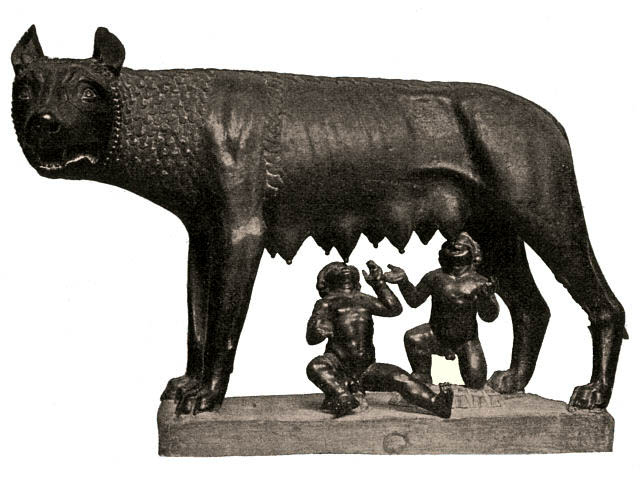 |
The winter year was bound when it had completed the twin cycles, one could say,
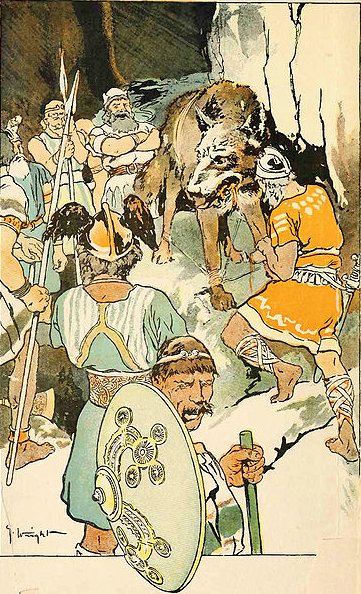
... When it was evident that the years lay ready to burst into life, everyone took hold of them, so that once more would start forth - once again - another (period of) fifty-two years. Then (the two cycles) might proceed to reach one hundred and four years. It was called 'One Age' when twice they had made the round, when twice the times of binding the years had come together. Behold what was done when the years were bound - when was reached the time when they were to draw the new fire, when now its count was accomplished. First they put out fires everywhere in the country round. And the statues, hewn in either wood or stone, kept in each man's home and regarded as gods, were all cast into the water. Also (were) these (cast away) - the pestles and the (three) hearth stones (upon which the cooking pots rested); and everywhere there was much sweeping - there was sweeping very clear. Rubbish was thrown out; none lay in any of the houses ...
and therefore the ferocious Wolf became a Dog at the time when η Andromedae (the House of Horus, Heth Hor, Hathor) returned to visibility because it meant the Sun had reached Sheratan (*27 = *11 + *16), although south of the equator the corresponding first point (of Aries) came half a year later, when it was the Full Moon (Hotu) who was at Sheratan.
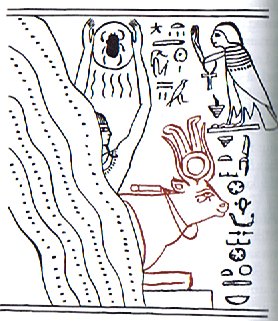

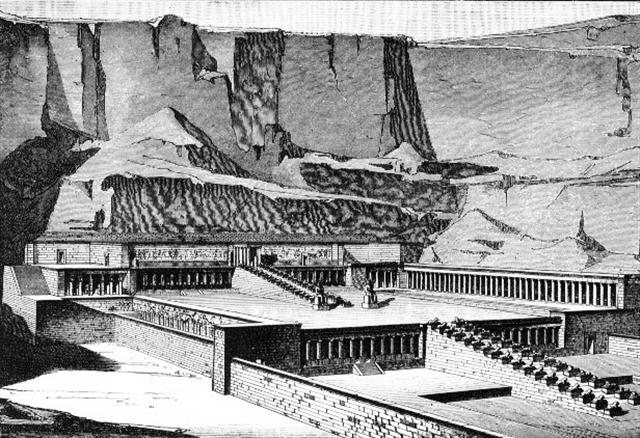
... it is not too much to assume that the Egyptians observed, and taught people to observe, the sun on the horizon. This being so, the chances are that at first they would observe the stars on the horizon too, both stars rising and stars setting; this indeed is rendered more probable by the very careful way in which early astronomers defined the various conditions under which a star can rise or set, always, be it remembered, in relation to the sun ... Although the Egyptians knew nothing about telescopes, it would seem that they had the same problem before them which we solve by a special arrangement in the modern telescope - they wanted to keep the light pure, and to lead it into their sanctuary as we lead it to the eyepiece. To keep the light that passes into the eyepiece of a modern telescope pure, we have between the object-glass and the eyepiece a series of what are called diaphragms; that is, a series of rings right along the tube, the inner diameter of the rings being greatest close to the object-glass, and smallest close to the eyepiece; these diaphragms must so be made that all the light from the object-glass shall fall upon the eyepiece, without loss or reflection by the tube. These apertures in the pylons and separating walls of Egyptian temples exactly represent the diaphragms in the modern telescope ... (Lockyer)

| 1 |
Horn |
α Virginis (Spica) |
Crocodile |
(202.7) |
Oct 9 (282 = 472 - 190) |
| 2 |
Neck |
κ Virginis |
Dragon |
(214.8) |
Oct 21 (294) |
| 3 |
Root |
α Librae (Zuben Elgenubi) |
Badger |
(224.2) |
Oct 31 (304) |
| 4 |
Room |
π Scorpii (Vrischika) |
Hare |
(241.3) |
Nov 17 (321) |
| 5 |
Heart |
σ Scorpii |
Fox |
(247.0) |
Nov 23 (327) |
| 6 |
Tail |
μ Scorpii (Denebakrab) |
Tiger |
(254.7) |
Nov 30 (334) |
| 7 |
Winnowing Basket |
γ Sagittarii (Nash) |
Leopard |
(273.7) |
Dec 19 (353) |
| December solstice |
| 8 |
South Dipper |
φ Sagittarii |
Unicorn |
(284.0) |
Dec 30 (364) |
| 9 |
Ox / Herd Boy |
β Capricornii (Dabih) |
Buffalo |
(308.0) |
Jan 23 (388) |
| 10 |
Girl |
ε Aquarii (Albali) |
Bat |
(314.8) |
Jan 29 (394) |
| 11 |
Emptiness |
β Aquarii (Sadalsud) |
Rat |
(325.9) |
Feb 9 (405) |
| 12 |
Rooftop |
α Aquarii (Sadalmelik) |
Swallow |
(334.6) |
Feb 18 (414) |
| 13 |
House |
α Pegasi (Markab) |
Pig |
(349.5) |
Mar 5 (429) |
| March equinox |
| 14 |
Wall |
γ Pegasi (Algenib) |
Porcupine |
(1.8) |
Mar 22 (81) |
| 15 |
Legs |
η Andromedae |
Wolf |
(11.4) |
Apr 1 (91) |
| 16 |
Bond |
β Arietis (Sheratan) |
Dog |
(27.4) |
Apr 17 (107 = 91 + 16) |
| Egyptian courtyard |
 |
Phoenician heth |
 |
Greek eta |
Η (η) |
|
... The letter shape ultimately goes back to a hieroglyph for 'courtyard' ... possibly named hasir in the Middle Bronze Age alphabets, while the name goes rather back to hayt, the name reconstructed for a letter derived from a hieroglyph for 'thread'

... The kaikai are the rythmic songs that are sung to cat's cradles, the string games that are found not only throughout the Pacific but throughout the world. On premissionary Rapa Nui the kaikai, together with their corresponding cat's cradles, were not simple children's games but were used, among other things, to produce magic effect. They were highly important for the study of Rapa Nui's rongorongo. This is because it was apparently with the aid of cat's cradles that the rongorongo experts taught their pupils to learn many of the chants accompanying the incised inscriptions ...
... string games could be resumed after it was clear that the Sun had managed to leave the horizon and was rapidly gaining in altitude: 'Before the sun starts to leave the horizon ... when it shows only on the horizon, ... then string games were no longer allowed as they might lacerate the sun. Once the sun had started to go higher and could be seen in its entirety, string games could be resumed, if one so wished. So the restriction on playing string games was only applicable during the period between the sun's return and its rising fully above the horizon ...
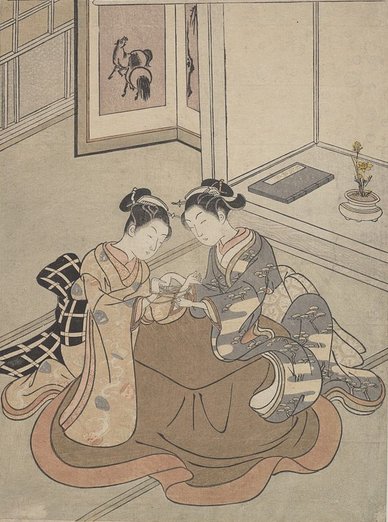
|
In the Chinese illustration below the Andromeda place at April 1 (91 = 456 = 19 * 24) looks like an opening (pú):

Anciently, in the Golden Age of the Bull, this opening for the young Sun (Horus, Harpokrates) had been 456 (April 1) - 2 * 188 = 80 days earlier. To make this position in time-space clear he was always pointing at his mouth - the main focus of attention for a very young one.
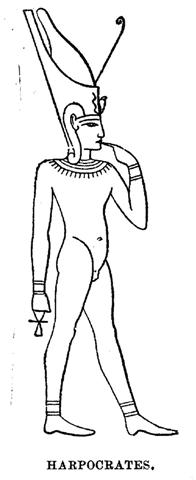
At the opposite side of the sky was Spica, from where the Blue Dragon rose up.
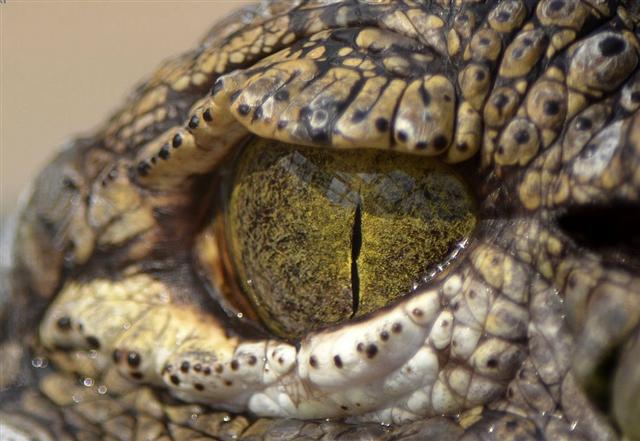
107 (= 91 + 16) + 365 = 472 (= 16 * 29½) = 282 (Spica) + 190.
Papa O Pea began in Hora Iti 20, which was 148 (= 4 * 37) days after the Julian equinox and 16 days before 4 * 41 = 164 (= 248 - 84). Here the mouth of Horus was in the past and the Sun had reached his winter maid - she who was making food scarce and everyone hungry.
... Antares, visible in the morning sky of December-January, came to stand for summer heat; hence the saying, 'Rehua cooks (ripens) all fruit'. The generally accepted version of the Rehua myth, according to Best, is that Rehua had two wives, the stars on either side of Antares. One was Ruhi-te-rangi or Pekehawani, the personification of summer languor (ruhi), the other Whaka-onge-kai, She-who-makes-food-scarce before the new crops can be harvested ...
The food bowl had no use in these hungry times.
Pea. (Also peapea): To go away with bits of food or mud sticking to one's face or garments. Vanaga. Peaha, perhaps ... maybe, chance, doubtful; reoreo peaha ... Ma.: pea, perhaps. Peapea, an erasure ... hakapeapea ... Peau, to sweep all away. Ma.: peau, to be turned away. Churchill. Peau, a wave (Sa., To., Fu., Fotuna, Niuē, Mq., Nuguria); Mgv.: peau, peahu, id. Churchill 2.
... But in the fullness of time an obscure instinct led the eldest of them towards the anthill which had been occupied by the Nummo. He wore on his head a head-dress and to protect him from the sun, the wooden bowl he used for his food. He put his two feet into the opening of the anthill, that is of the earth's womb, and sank in slowly as if for a parturition a tergo [i.e. his legs disappeared first]. The whole of him thus entered into the earth, and his head itself disappeared. But he left on the ground, as evidence of his passage into that world, the bowl which had caught on the edges of the opening. All that remained on the anthill was the round wooden bowl, still bearing traces of the food and the finger-prints of its vanished owner, symbol of his body and of his human nature, as, in the animal world, is the skin which a reptile has shed ...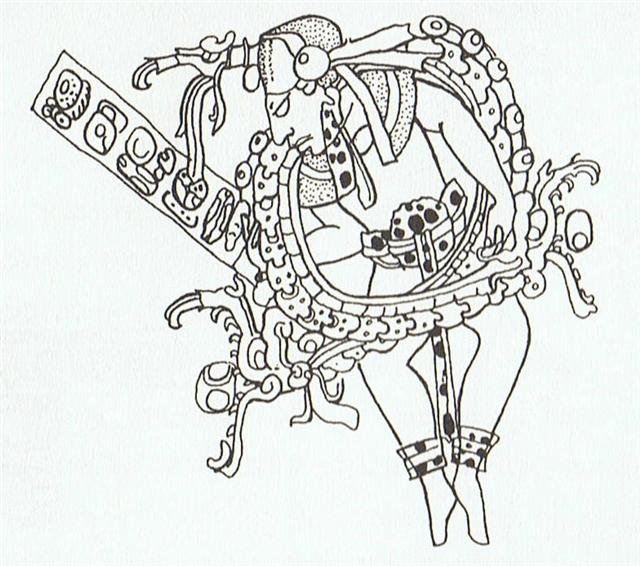
Therefore the food bowl was turned upside down, the same kind of sign as when a canoe was turned around and made into a house, or when a scallop shell was inverted.

nuku |
...After the food supplies had been brought on land, the two rulers, the king and the queen said, 'Drag the canoes on land and take them apart (so the wood can be used) to build houses and cover the roofs!' They dragged the two canoes on land and took them apart. After they had finished disassembling the canoes, Nuku covered all the houses ... [E:84]
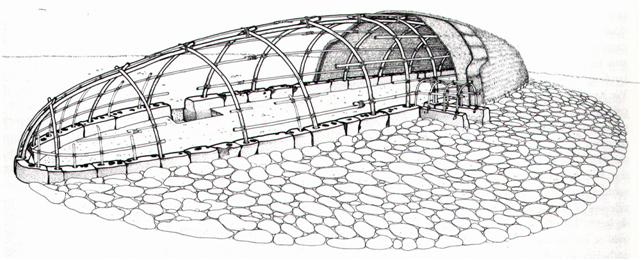
| Nuku. 1. Pau.: nuka, crowd, throng. Ta.: nuú, army, fleet. Mg.: nuku, a host, army. 2. Mgv.: nuku, land, country, place. Sa.: nu'u, district, territory, island. Churchill. |
... die Erde von den Chaldäern in der Gestalt eines umgestülpten Bootes vorgestellt wurde ... |

... The son of Zebedee and Salome, James is styled 'the Greater' to distinguish him from the Apostle James 'the Less', who was probably shorter of stature. We know nothing of St. James's early life. He was the brother of John, the beloved disciple, and probably the elder of the two ... James' emblem was the scallop shell (or 'cockle shell'), and pilgrims to his shrine often wore that symbol on their hats or clothes. The French for a scallop is coquille St. Jacques, which means 'cockle (or mollusk) of St. James'. The German word for a scallop is Jakobsmuschel, which means 'mussel (or clam) of St. James'; the Dutch word is Jacobsschelp, meaning 'shell of St. James' ... The scallop shell is represented in the decoration of churches named after St. James, such as in St James' Church, Sydney, where it appears in a number of places, including in the mosaics on the floor of the chancel. When referring to St James, the scallop shell is represented with convex perspective. Referring to Venus the perspective is concave ...
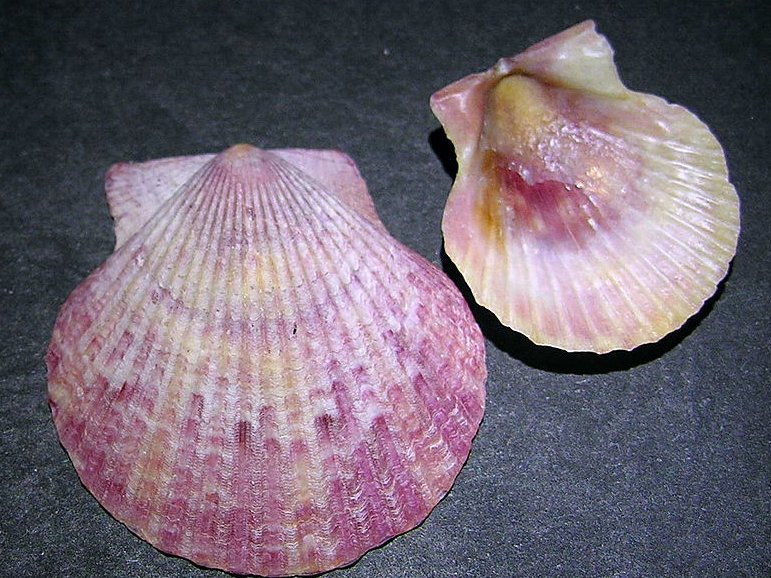
|









.jpg)



.jpg)















